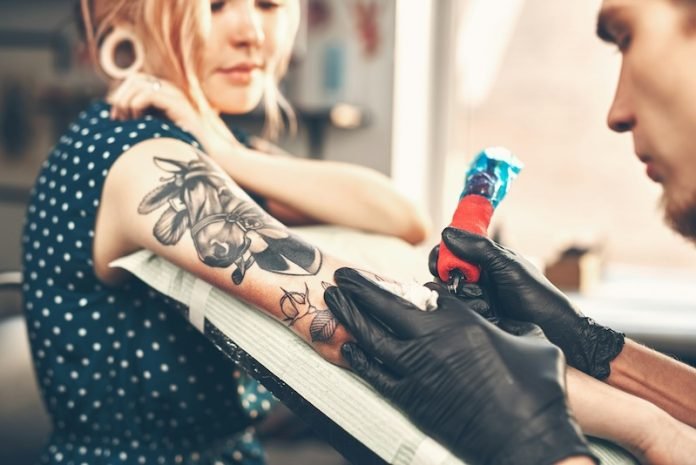
Imagine getting a tattoo, a piece of art etched onto your skin forever. But do you know what’s actually being injected into your skin?
Recent research from Binghamton University has revealed some startling truths about the world of tattoo inks.
Led by Assistant Professor of Chemistry John Swierk, the study sheds light on the discrepancies between what’s listed on tattoo ink labels and what’s actually in the bottle.
Swierk’s team, including doctoral student Kelli Moseman and colleagues Ahshabibi Ahmed and Alexander Ruhren, embarked on this investigation to understand how tattoos might change under the influence of light.
However, they stumbled upon a different issue: the ingredients listed on the ink bottles didn’t match their actual contents.
This discrepancy raised questions about whether these unlisted substances were initially part of the ink or if they were byproducts of chemical reactions with light.
The researchers analyzed inks from nine U.S. manufacturers, spanning a range of sizes and reputations.
They looked at inks in six different colors and found that a whopping 90% of the 54 inks studied had significant differences from their labels. These differences included unexpected pigments and additives not listed on the labels.
One concerning finding was that more than half of the inks contained polyethylene glycol, a substance that can cause organ damage with prolonged exposure.
Other inks had propylene glycol, which can trigger allergic reactions, and additional contaminants like an antibiotic and 2-phenoxyethanol, which could pose health risks, especially to nursing infants.
The study couldn’t determine if these discrepancies were due to intentional actions by the manufacturers or if they were the result of receiving mislabeled or contaminated materials.
Nevertheless, the findings are a wake-up call for both manufacturers and consumers. Swierk hopes this research prompts manufacturers to improve their processes and encourages tattoo artists and their clients to demand better labeling and transparency.
The study also touches on regulatory issues. Until recently, tattoo inks were largely unregulated in the U.S., treated as cosmetics without specific oversight.
However, with the passage of the Modernization of Cosmetics Regulation Act at the end of 2022, the FDA has begun to regulate tattoo inks, including their labeling. This research could play a crucial role in shaping these new regulations.
Interestingly, the study focused only on substances present in concentrations of 2,000 parts per million (ppm) or higher, leaving the possibility of even more unlisted substances at lower concentrations.
This is particularly noteworthy when compared to European standards, which consider substances at concentrations as low as 2 ppm, and where regulations on tattoo inks are much stricter.
Looking ahead, the Binghamton team plans to investigate the presence of pigments banned in Europe in inks sold there, particularly focusing on blue and green inks affected by chemical regulations.
This ongoing research aims to empower tattoo artists and their clients by highlighting the need for better manufacturing and labeling practices.
Swierk emphasizes the dedication of tattoo artists to their craft and their desire for the best outcomes for their clients, underscoring the importance of this research in ensuring the safety and quality of tattoo inks used worldwide.
The research findings can be found in Analytical Chemistry.
Copyright © 2024 Knowridge Science Report. All rights reserved.



